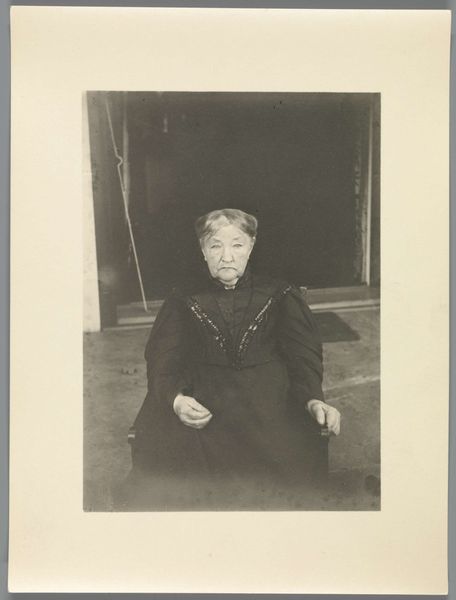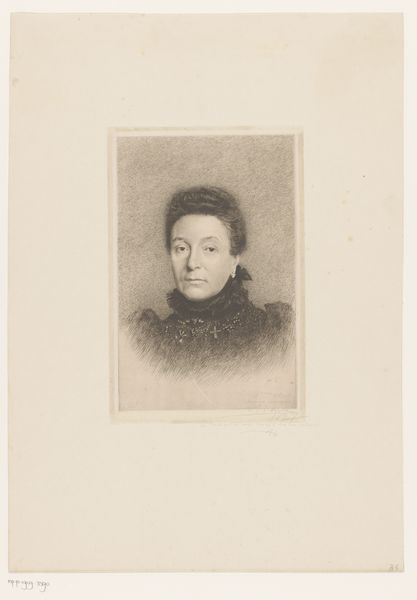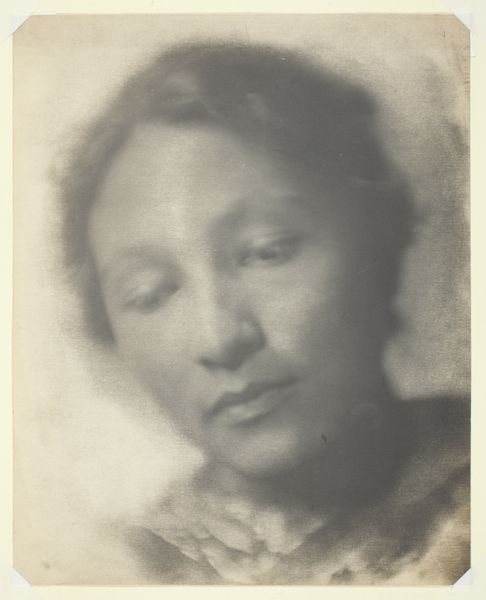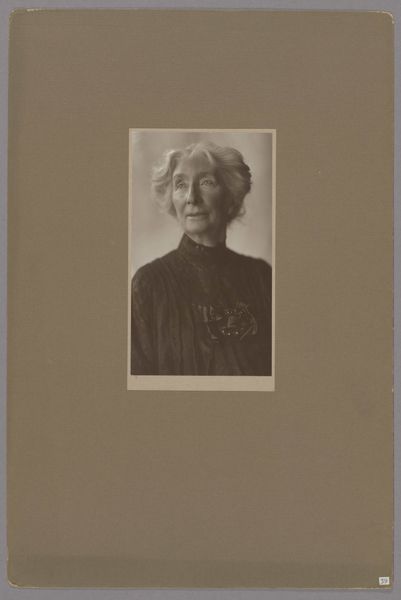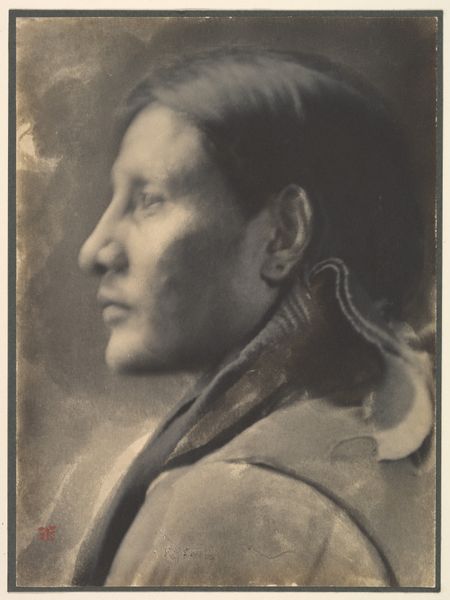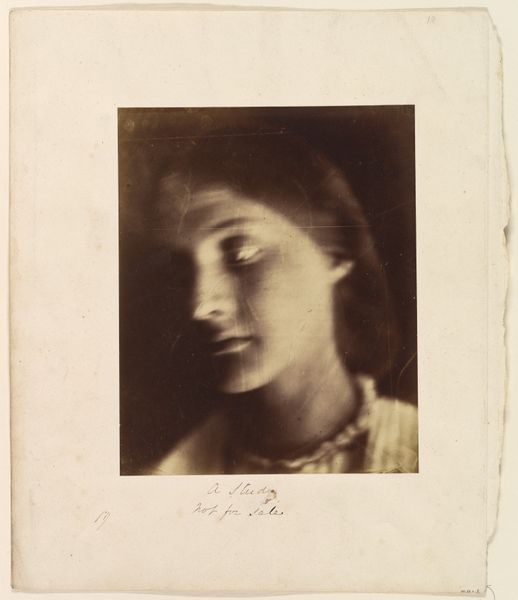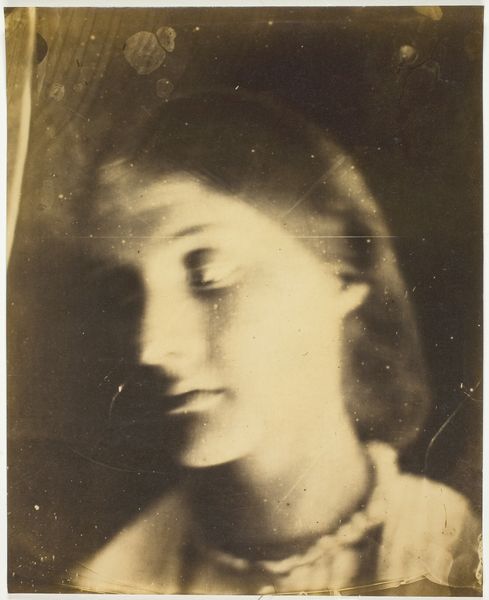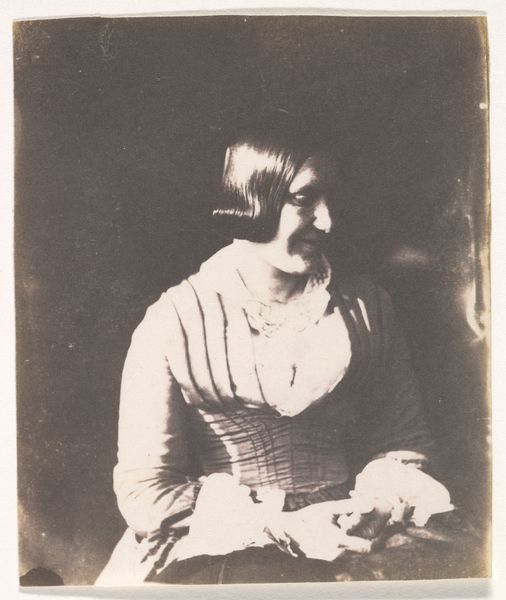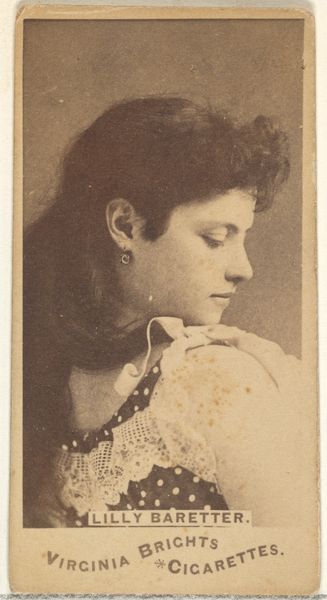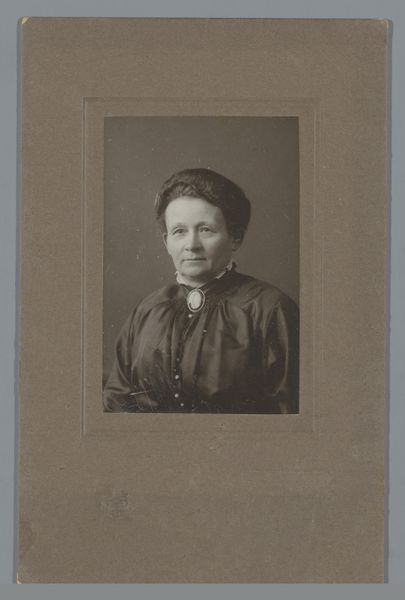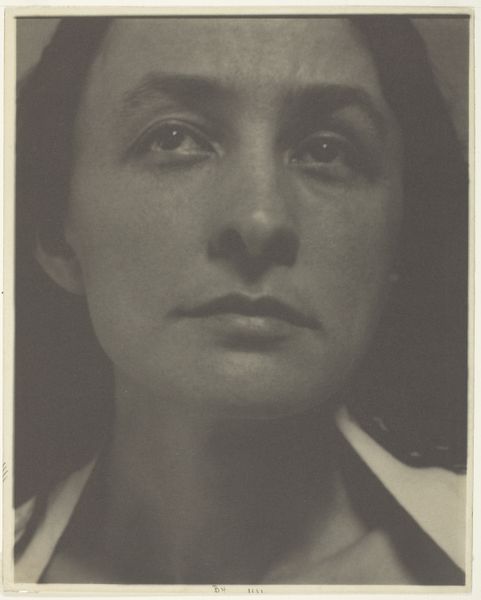
Reproductie naar een fotoportret van Marie Koens, de latere echtgenote van Frank van der Goes door Willem Witsen c. 1860 - 1915
0:00
0:00
anonymous
Rijksmuseum
Dimensions: height 231 mm, width 174 mm, height 168 mm, width 119 mm
Copyright: Rijks Museum: Open Domain
Editor: This is a gelatin-silver print by Willem Witsen, titled "Reproductie naar een fotoportret van Marie Koens, de latere echtgenote van Frank van der Goes," dating from around 1860 to 1915. There’s a real sense of quiet dignity about it. The subject, Marie Koens, seems very composed. What stands out to you when you look at this portrait? Curator: The photograph is striking in its simplicity, but also quite telling about the role of women and photography in that period. Witsen was a key figure in Dutch artistic circles, and this reproduction reflects an engagement with portraiture beyond mere likeness. The question I ask myself is, who was this image meant to serve, and how does its existence affect the social perception of women in the early 20th century? Editor: Serve in what way? Was it a common thing to do? Curator: Well, photography was becoming increasingly accessible, impacting social dynamics. These portraits offered a form of visual legacy, solidifying the subject’s presence. However, it was more about reinforcing social order and preserving an image of ideal womanhood. Marie, in her composed posture, conforms to the societal expectation. Note the choice of clothing too – do you think that embellishment and trim are a true likeness of everyday dressing for women in that era? Editor: Probably not, that's an interesting observation. It does speak to a kind of performed identity, especially in light of her marriage to Frank van der Goes. Almost like an introduction of her to his world. Curator: Precisely. It makes one think about the role of the photographer as not just an artist, but as someone participating in the construction of social narratives. Also the politics embedded within portraiture and representation more broadly. What do we gain when such representations become popular and readily available? Editor: It’s a lot to consider: representation, social expectations and how those are circulated. I'll definitely look at photography differently now!
Comments
No comments
Be the first to comment and join the conversation on the ultimate creative platform.
